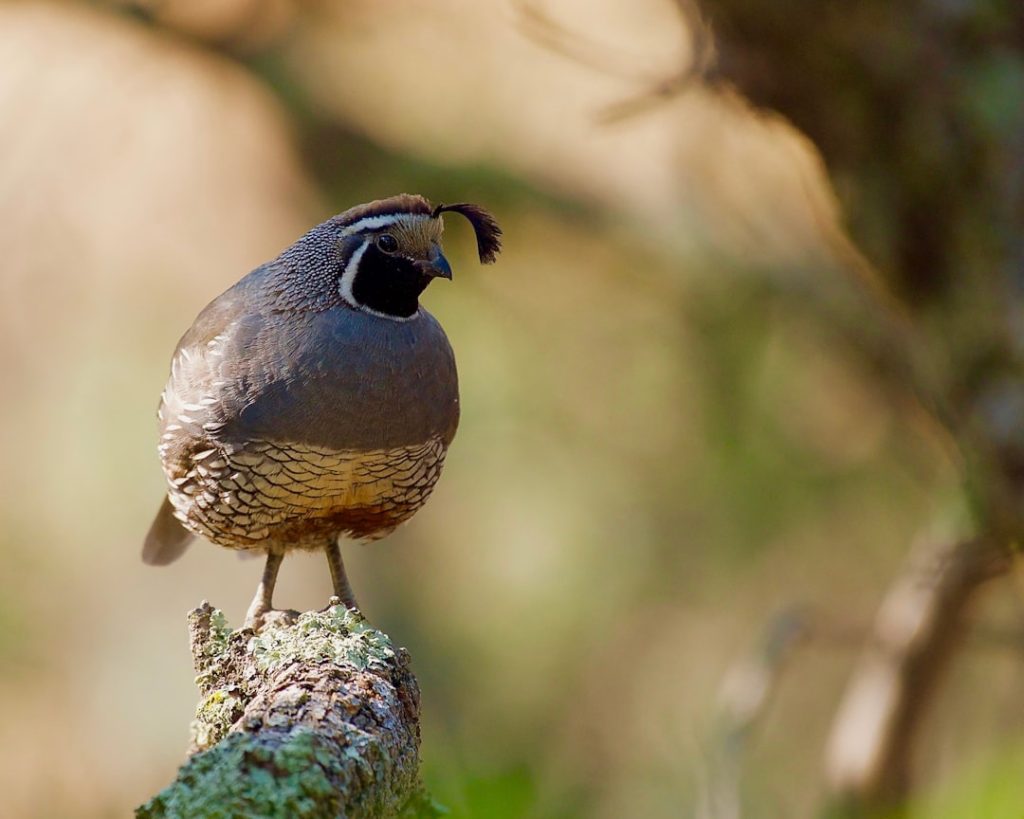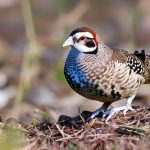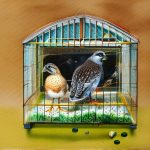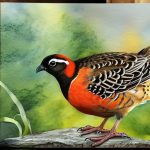Line breeding is a breeding strategy that involves mating closely related individuals within a specific line or family of quail in order to concentrate desirable traits. This can be a useful tool for quail breeders looking to improve certain characteristics within their flock, such as size, color, or egg production. By selectively breeding related individuals over multiple generations, breeders can increase the likelihood of offspring inheriting the desired traits. Line breeding can be a valuable technique for creating uniformity within a quail population and establishing a distinct genetic line.
In line breeding, breeders typically start with a foundation stock of quail that possess the desired traits. These quail are then bred with their offspring or other closely related individuals to reinforce the desired characteristics. Over time, this process can result in a more predictable and consistent expression of the desired traits within the line. However, it is important for breeders to carefully monitor the health and genetic diversity of the line to avoid potential negative consequences of inbreeding.
Table of Contents
- 1 The Risks and Consequences of Line Breeding
- 2 The Potential Impact on Quail Health and Genetics
- 3 The Ethical Considerations of Line Breeding in Quail
- 4 Alternatives to Line Breeding for Quail Improvement
- 5 The Importance of Genetic Diversity in Quail Populations
- 6 Best Practices for Breeding and Maintaining Healthy Quail Populations
- 7 FAQs
Key Takeaways
- Line breeding in quail involves breeding closely related individuals to maintain desirable traits
- Risks of line breeding include increased likelihood of genetic defects and reduced genetic diversity
- Line breeding can impact quail health by increasing susceptibility to diseases and reducing overall fitness
- Ethical considerations of line breeding include potential harm to quail welfare and the importance of genetic diversity
- Alternatives to line breeding for quail improvement include outcrossing and selective breeding for diverse traits
The Risks and Consequences of Line Breeding
While line breeding can be an effective method for concentrating desirable traits within a quail population, it also carries inherent risks and consequences. One of the primary concerns with line breeding is the potential for increased expression of deleterious genetic traits. When closely related individuals are bred together over multiple generations, there is a higher likelihood of offspring inheriting harmful genetic mutations or defects. This can lead to an increase in genetic disorders and reduced overall fitness within the line.
In addition to the potential for genetic defects, line breeding can also result in a loss of genetic diversity within the quail population. As closely related individuals are repeatedly bred together, the gene pool becomes more limited, which can decrease the overall resilience and adaptability of the population. This loss of genetic diversity can make the quail more susceptible to disease, environmental changes, and other external pressures. It is important for breeders to carefully consider these risks and consequences when implementing a line breeding program and to take proactive measures to mitigate potential negative outcomes.
The Potential Impact on Quail Health and Genetics
Line breeding can have a significant impact on the health and genetics of quail populations. By repeatedly mating closely related individuals, breeders increase the likelihood of offspring inheriting both desirable and undesirable genetic traits. While this can lead to a concentration of desirable characteristics within the line, it also raises the risk of genetic disorders and reduced overall fitness. Over time, this can result in decreased reproductive success, higher mortality rates, and other health issues within the line.
In terms of genetics, line breeding can lead to a loss of genetic diversity within the quail population. As closely related individuals are bred together over multiple generations, the gene pool becomes more limited, which can reduce the overall adaptability and resilience of the population. This loss of genetic diversity can make the quail more vulnerable to disease outbreaks, environmental changes, and other external pressures. It is important for breeders to carefully monitor the health and genetic diversity of their lines and take proactive measures to maintain a healthy and resilient population.
The Ethical Considerations of Line Breeding in Quail
When considering line breeding in quail populations, it is important to take into account the ethical implications of this breeding strategy. One of the primary ethical concerns with line breeding is the potential for increased expression of genetic disorders and defects within the population. By repeatedly mating closely related individuals, breeders increase the likelihood of offspring inheriting harmful genetic mutations, which can lead to suffering and reduced quality of life for the quail.
In addition to the potential impact on quail health, line breeding also raises ethical questions about the welfare of the animals involved. As closely related individuals are bred together over multiple generations, there is a risk of increased stress and reduced overall fitness within the population. It is important for breeders to prioritize the well-being of their quail and take proactive measures to minimize potential negative outcomes associated with line breeding. This may include regular health screenings, genetic testing, and careful monitoring of breeding pairs to ensure the continued health and welfare of the population.
Alternatives to Line Breeding for Quail Improvement
While line breeding can be an effective method for concentrating desirable traits within a quail population, there are alternative breeding strategies that can be used to achieve similar goals while minimizing potential negative consequences. One such alternative is outcrossing, which involves mating individuals from different genetic lines or families in order to introduce new genetic diversity into the population. This can help to mitigate the potential negative effects of inbreeding and maintain a healthier and more resilient quail population.
Another alternative to line breeding is crossbreeding, which involves mating individuals from different quail breeds in order to create hybrid offspring with desirable traits from each parent breed. This can be a useful strategy for introducing new genetic diversity into a population while also creating unique combinations of traits that may not be present in either parent breed. By carefully selecting breeding pairs and monitoring the health and fitness of the offspring, breeders can use crossbreeding to improve specific characteristics within their quail population without relying solely on line breeding.
The Importance of Genetic Diversity in Quail Populations

Genetic diversity plays a crucial role in maintaining healthy and resilient quail populations. A diverse gene pool allows for greater adaptability and resilience in the face of environmental changes, disease outbreaks, and other external pressures. By maintaining a diverse range of genetic traits within the population, quail are better equipped to survive and thrive in their natural habitat. Genetic diversity also provides a buffer against harmful genetic mutations and disorders, as well as ensuring that there is a wide range of traits available for natural selection to act upon.
In addition to its importance for overall population health, genetic diversity also plays a key role in maintaining the long-term viability of quail populations. By preserving a diverse range of genetic traits, breeders can help ensure that quail populations remain adaptable and resilient in the face of future challenges. This is particularly important in light of ongoing environmental changes and habitat loss, which can place increased pressure on wildlife populations. By prioritizing genetic diversity in their breeding programs, quail breeders can help contribute to the long-term sustainability and conservation of these important bird species.
Best Practices for Breeding and Maintaining Healthy Quail Populations
When breeding quail populations, it is important to prioritize the health and genetic diversity of the birds in order to maintain a resilient and sustainable population. One key best practice is to regularly monitor the health and fitness of breeding pairs in order to identify any potential issues early on. This may include regular health screenings, genetic testing, and careful observation of breeding behavior in order to ensure that only healthy individuals are selected for reproduction.
Another best practice for maintaining healthy quail populations is to prioritize genetic diversity in breeding programs. This may involve implementing outcrossing or crossbreeding strategies in order to introduce new genetic traits into the population and mitigate potential negative effects of inbreeding. By carefully selecting breeding pairs from diverse genetic backgrounds, breeders can help ensure that their quail populations remain adaptable and resilient in the face of future challenges.
Overall, maintaining healthy quail populations requires a careful balance between concentrating desirable traits through selective breeding and preserving genetic diversity to ensure long-term viability. By prioritizing the health and welfare of their birds and implementing best practices for maintaining genetic diversity, quail breeders can help contribute to the sustainability and conservation of these important bird species.
Line breeding in quail can have detrimental effects on the health and genetic diversity of the population. In a related article on PoultryWizard, “When is Duck Mating Season?” discusses the importance of understanding natural mating behaviors to ensure healthy breeding practices for ducks. This article provides valuable insights into the mating habits of ducks, offering a contrast to the potential issues associated with line breeding in quail. Understanding the natural mating behaviors of various poultry species can help breeders make informed decisions to maintain genetic diversity and overall population health.
FAQs
What is line breeding in quail?
Line breeding in quail is a breeding method where closely related individuals, such as siblings or parent-offspring pairs, are mated to maintain or reinforce specific desirable traits within a quail population.
How does line breeding affect quail populations?
Line breeding can lead to an increase in the expression of desirable traits, but it can also result in the accumulation of deleterious genetic traits due to the limited genetic diversity within the population. This can lead to reduced overall fitness and increased susceptibility to diseases and genetic abnormalities.
What are the potential negative effects of line breeding in quail?
Line breeding can result in a higher frequency of genetic disorders, reduced fertility, and decreased overall health and vigor in quail populations. It can also limit the ability of quail to adapt to changing environmental conditions.
How can line breeding be managed to minimize negative effects in quail populations?
To minimize the negative effects of line breeding, it is important to periodically introduce new genetic material from unrelated quail populations to increase genetic diversity. Additionally, careful selection of breeding pairs and regular monitoring for signs of inbreeding depression can help mitigate the negative effects of line breeding.
Meet Walter, the feathered-friend fanatic of Florida! Nestled in the sunshine state, Walter struts through life with his feathered companions, clucking his way to happiness. With a coop that’s fancier than a five-star hotel, he’s the Don Juan of the chicken world. When he’s not teaching his hens to do the cha-cha, you’ll find him in a heated debate with his prized rooster, Sir Clucks-a-Lot. Walter’s poultry passion is no yolk; he’s the sunny-side-up guy you never knew you needed in your flock of friends!







